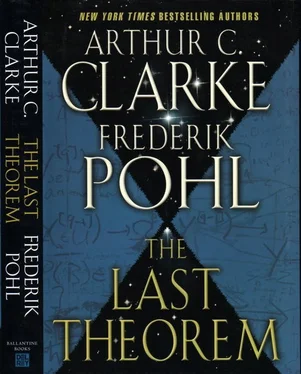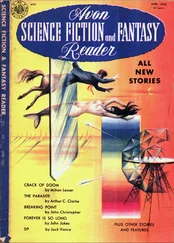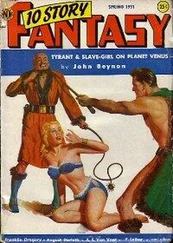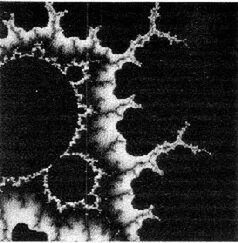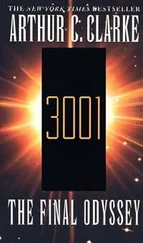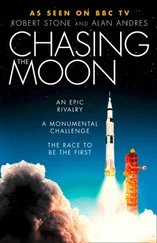Silence for a moment while a hundred students counted on their fingers—Mercury, Venus, Earth, Mars—until a young woman in the front row called, “Are you talking about the moon, Dr. Vorhulst?”
He glanced at his finder plate for her name, then tipped her a salute. “Right on, Roshini. But before we get to the moon let me show you some pictures of a place I’ve actually been to, namely, Hawaii.”
He turned to the wall screen behind him, which had begun to display a nighttime shot of a dark hillside running down to the sea. The slope was dotted with splotches of red fires, like the campsite of an army, and where the splotches reached the shoreline there were violent pyrotechnics with fiery meteors flying above the surface.
“That’s Hawaii,” Vorhulst said. “The big island. The volcano Kilauea is erupting, and what you see is its lava flowing into the sea. As it flows along, each little stream begins to cool on the outside, and so it forms a sort of a pipe of hardened stone that the liquid lava flows on through. Only, sometimes the lava breaks through the pipe. Then you see these isolated patches of red-hot lava shining out.” He gave the class time to wonder why they were looking at Hawaii when the subject had ostensibly been the moon. Then he touched his controller again. Now the screen displayed Dr. Vorhulst himself along with a rather good-looking young woman in a skimpy sunsuit. They were standing at the entrance to what looked like an overgrown cave in the middle of a tropical rain forest.
“That’s Annie Shkoda there with me,” Vorhulst told the class. “She was my thesis adviser in Hilo—and don’t get any ideas, because about a month after that picture was taken she married somebody else. What we’re just about to go into there is what Americans call the Thurston Lava Tube. I prefer the Hawaiian name, which is Nahuku, because actually the man named Thurston that the other name comes from had nothing to do with the tube. He was just a newspaper publisher who campaigned for creating the Volcanoes National Park. Anyway, what happened was that maybe four or five hundred years ago Kilauea—or possibly the earlier volcano, Mauna Loa—was in eruption. It poured out lava; the lava formed tubes. When the lava stopped flowing, the liquid stuff ran out of the tubes. But the tubes remained as great big pipes of rock. Over time they got covered up with mud and dirt and God knows what, but they were still there.” He paused, looking up at the rows of students. “Anyone care to guess what this has to do with the moon?” Twenty hands went up at once. Vorhulst picked the boy next to Ranjit. “Yes, Jude?”
The boy stood up eagerly. “There were volcanoes on the moon, too.”
The professor nodded. “You bet there were. Not very recently, because the moon is so small it cooled off long ago. But we can still see where there were humongous ones, where the basaltic lava flows still cover hundreds of square kilometers, and there are plenty of domes on the moon—on the plains or actually inside a crater—that are probably volcanic in origin. And if there are flows and domes, there was lava, and if there was lava, there was what?”
“Lava tubes!” a dozen students said at once—Ranjit being one of them.
“Lava tubes, exactly,” Vorhulst agreed. “On Earth, tubes like Nahuku rarely grow to more than a couple of meters in diameter, but the moon is a different matter. In the moon’s trivial gravity they could grow ten times as big—could grow to the size of the Chunnel between England and France. And they’re sitting there, waiting for some human being to come along and dig down to one of them and caulk it—very thoroughly caulk it—and fill it with air…and then rent out bedroom space in it to immigrants from Earth.” He looked up at the timing light over the screen, which had gone from green to amber and was now flashing red. “And that’s the end of today’s session,” he said.
But, as a matter of fact, it really wasn’t because at least a dozen hands were still up. Dr. Vorhulst cast a rueful glance at the implacably red timing light, but surrendered. “All right,” he said. “One more question. What is it?”
Several of the hand raisers dropped their own hands to turn eagerly toward a boy Ranjit had seen in the company of the boy who was his seatmate, Jude. He spoke right up, as though he had been waiting for his chance. “Dr. Vorhulst,” he said, “a few of us would like to know your opinion on something. What you say often sounds as though you think intelligent life might be quite common in the galaxy. Do you think that is true?”
Vorhulst gave him a quizzical look. “Come on, guys! How do I know some of you don’t have brothers-in-law who work as newspaper reporters? And if I say what you want me to say, what’s the story going to be, ‘University Stargazer Claims Countless Alien Races Will Compete with Humanity’?”
The boy stood his ground. “Do you?” he asked.
Vorhulst sighed. “All right,” he said. “It’s a fair question and I’ll give you a fair answer. I know of no scientific reason why there could not be a number, perhaps a quite large number, of life-bearing planets in our galaxy, nor of any scientific reason why some number of them have not developed scientifically advanced civilizations. That’s the truth. I have never denied it. Of course,” he added, “I’m not talking about your crazy superbeings out of the comics who want to make us humans their slaves, or maybe exterminate us entirely. Like—what were their names? Superman’s enemies that his father had captured before their planet blew up and put into a floating space prison that looked sort of like a cubical paperweight, only something happened and they all got loose?”
A voice from the back row was already shouting, “You mean General Zod?” And another voice came up with, “And the girl, Urna.” And then half a dozen others put in, “And Non!”
The professor gave them all a grin. “I’m happy to see that so many of you are so well versed in the classics. Anyway, trust me on this. They don’t exist. No hideous space aliens are going to decide to exterminate us, and now let’s get out of here before they call the campus police.”
Although Dr. Joris Vorhulst had never heard of the Grand Galactics or any of their client species—and would have been likely to give a very different answer if he had—he, technically, was still quite right in what he said. No space aliens were going to decide to exterminate the human race. The only space aliens interested in the subject had already made the decision to do so and had then gone on to more entertaining matters.
The Grand Galactics were not motivated to keep their turf clear of inimical species out of any notion of living in peace and amity. What they desired, and attained, was an existence with the least possible distraction from their main interests. Some of these interests had to do with their plans for an ideal galactic environment, which they had some hope of attaining in another ten or twenty billion years. Other interests were more like what humans might call the appreciation of beauty.
The Grand Galactics found many things “beautiful,” including what humans would describe as numbering, nucleonics, cosmology, string (and non-string) theory, causality, and many other areas. In their enjoyment of the fundamental aspects of nature, they might spend centuries—millennia, if they chose—contemplating the rich spectral changes as, one by one, some single atom lost its orbital electrons. Or they might study the distribution of prime numbers greater than 10 50, or the slow maturation of a star from wispy gas and thin-scattered particles through the initiation of nuclear burning to its terminal state as a cooling white dwarf or, again, as a cloud of wisps and particles.
Читать дальше
Конец ознакомительного отрывка
Купить книгу
